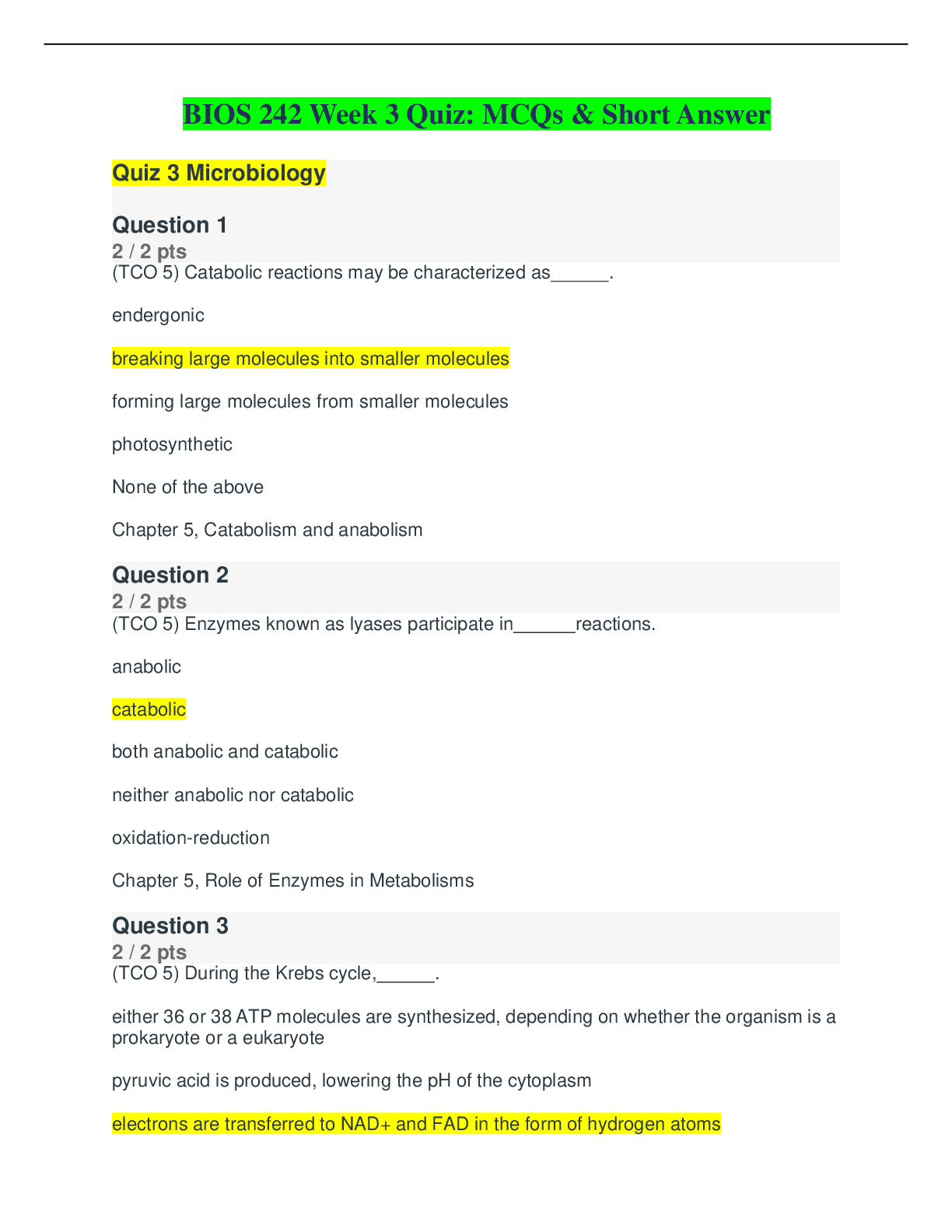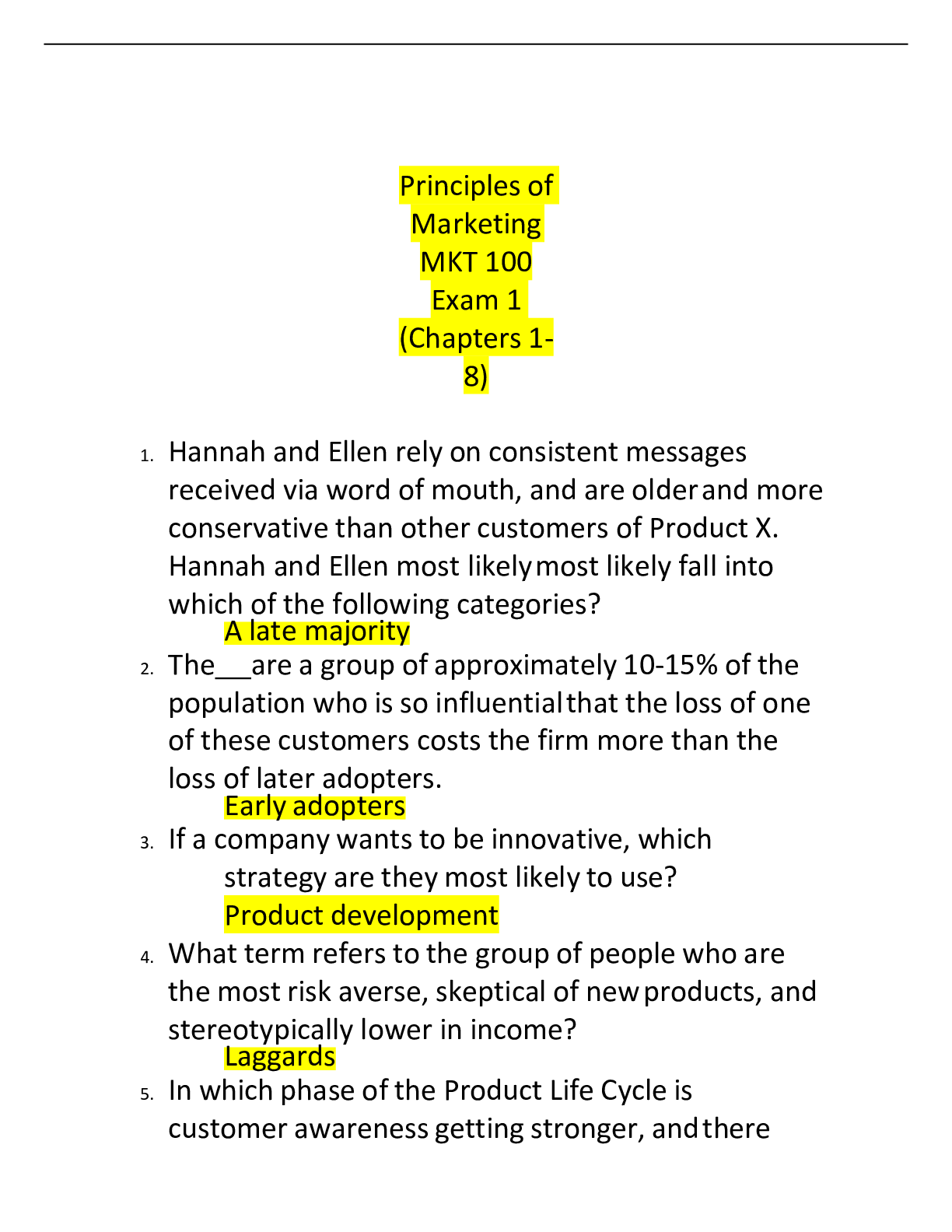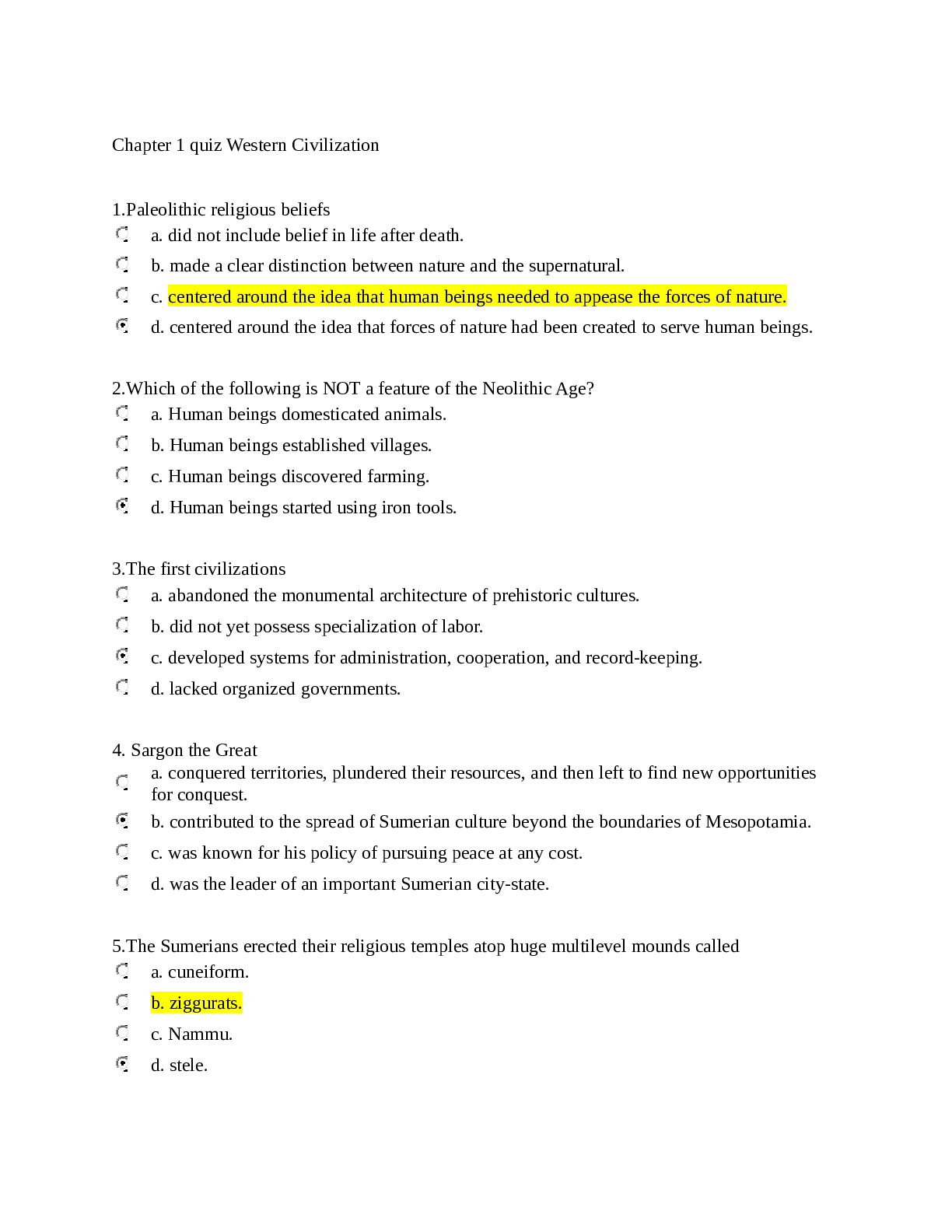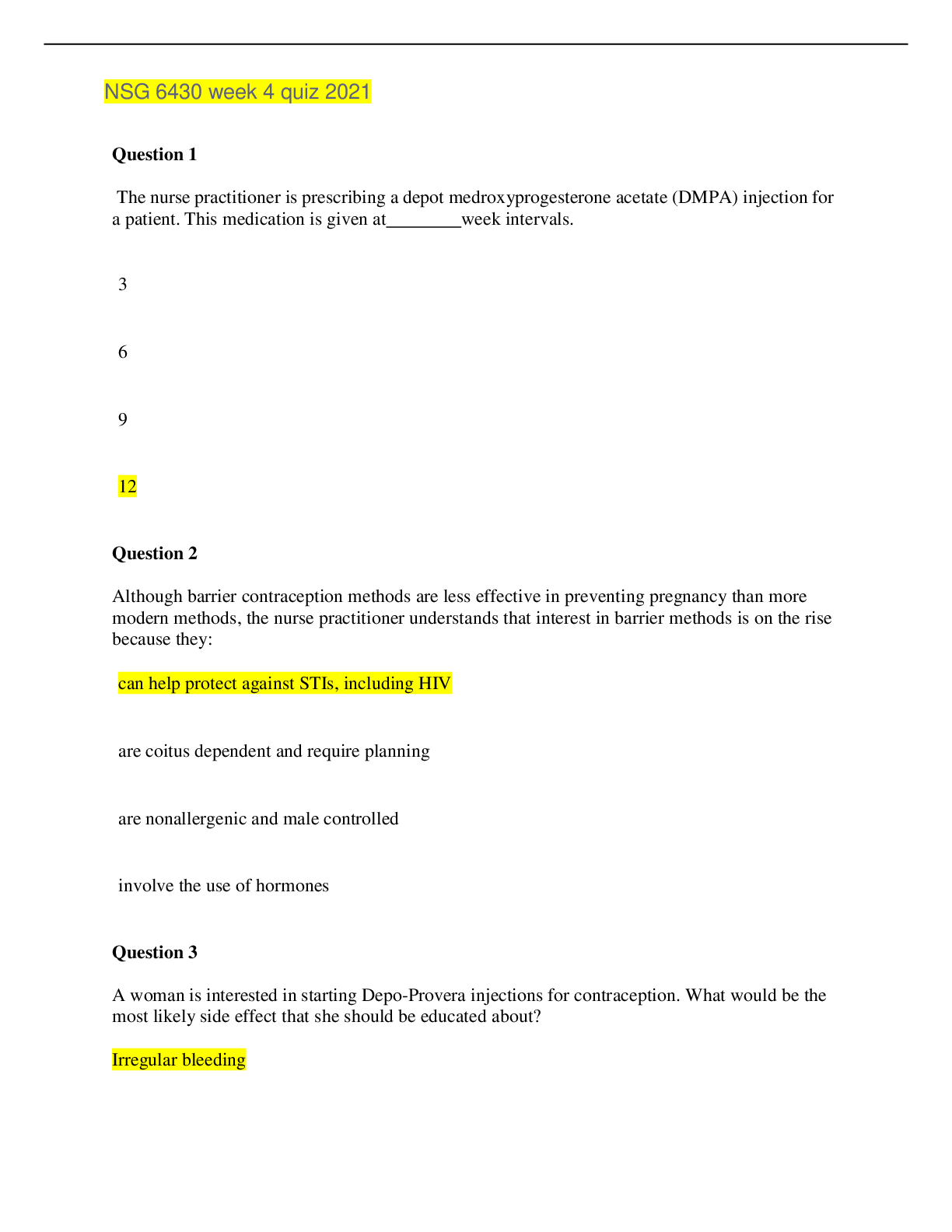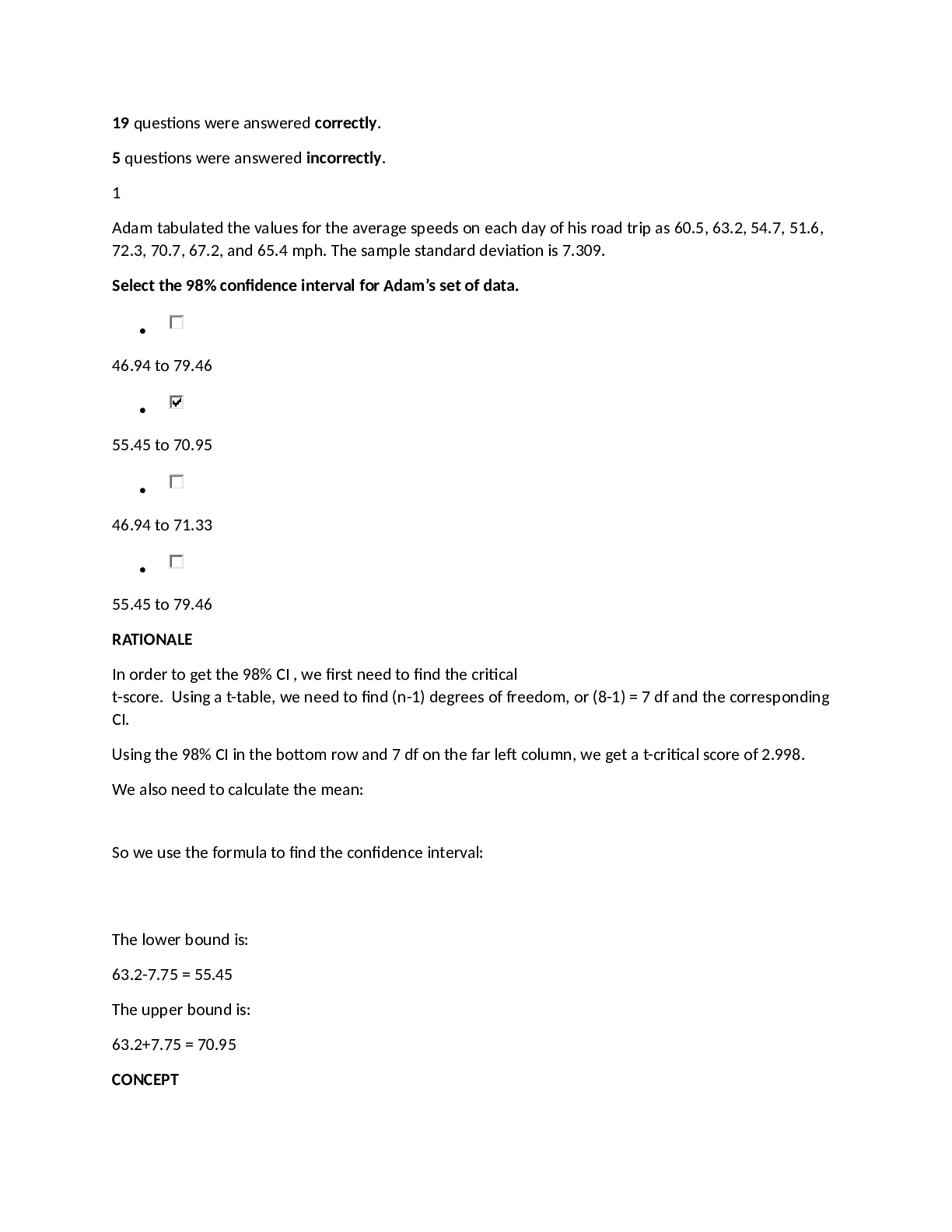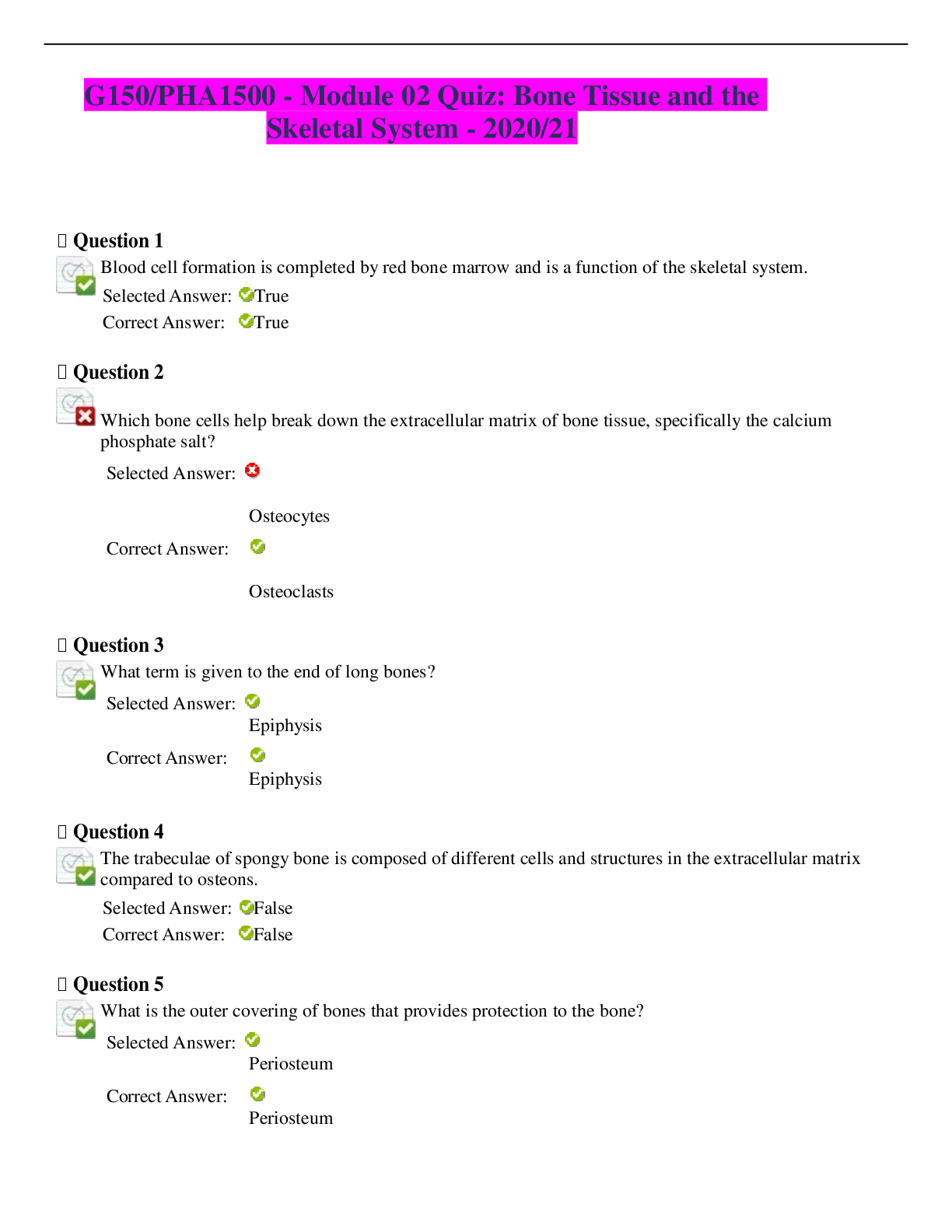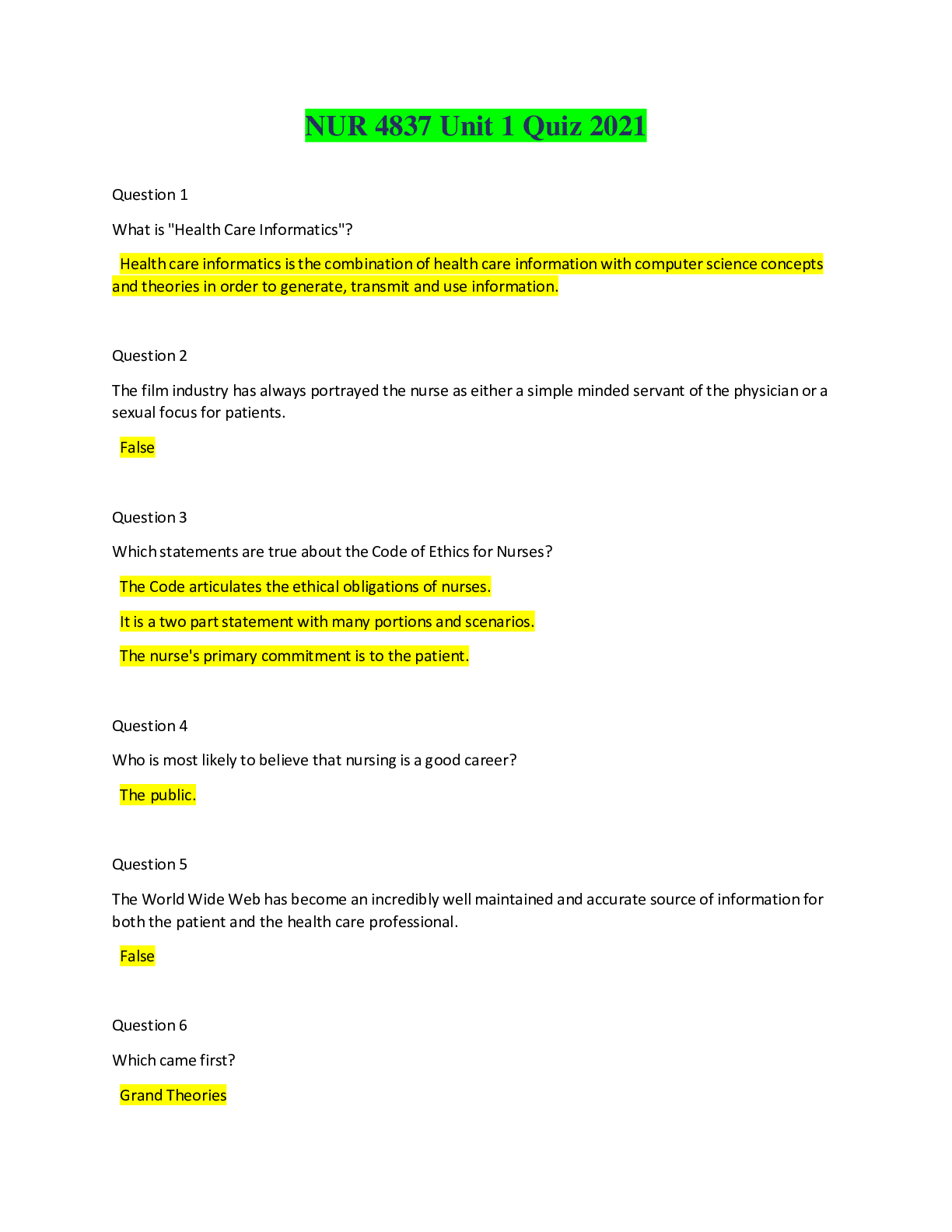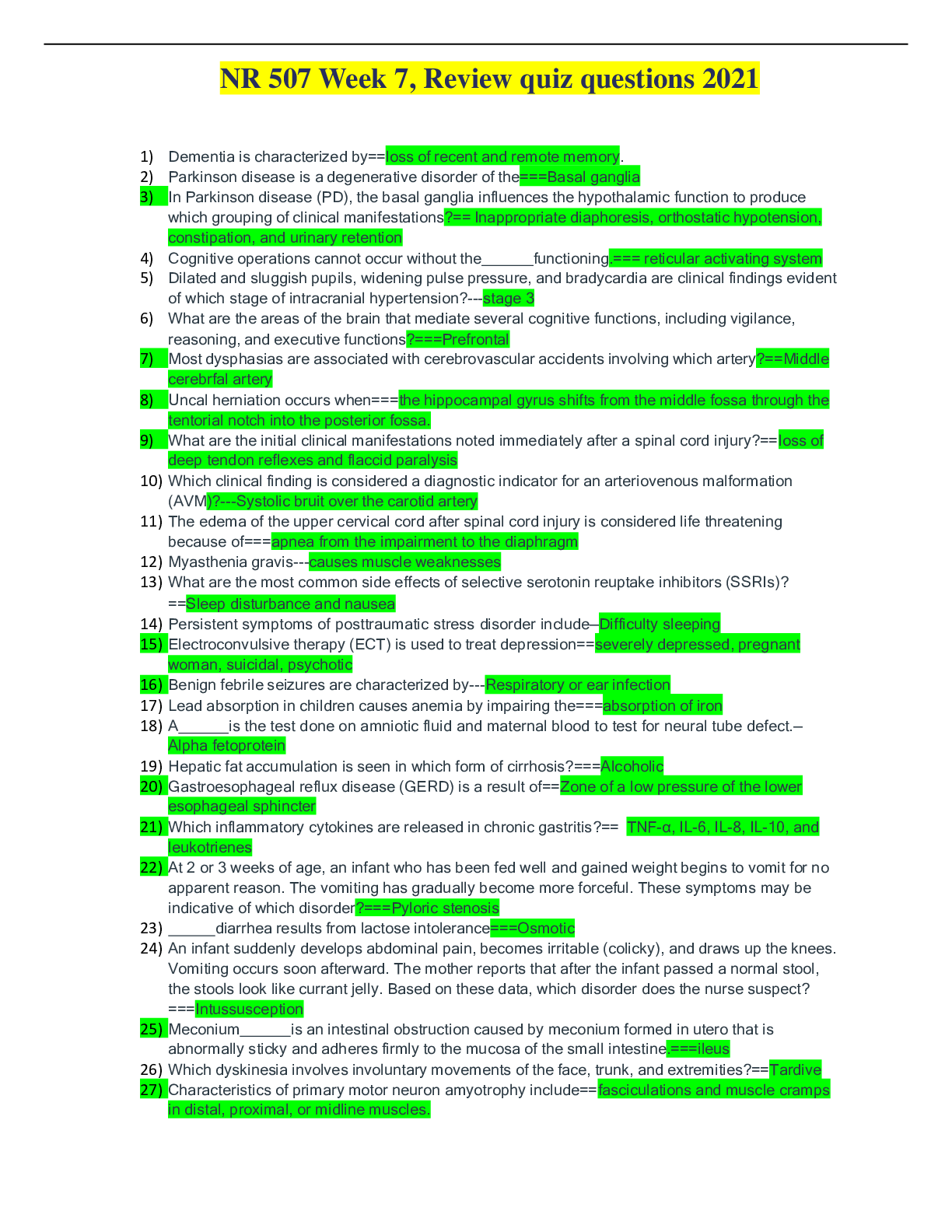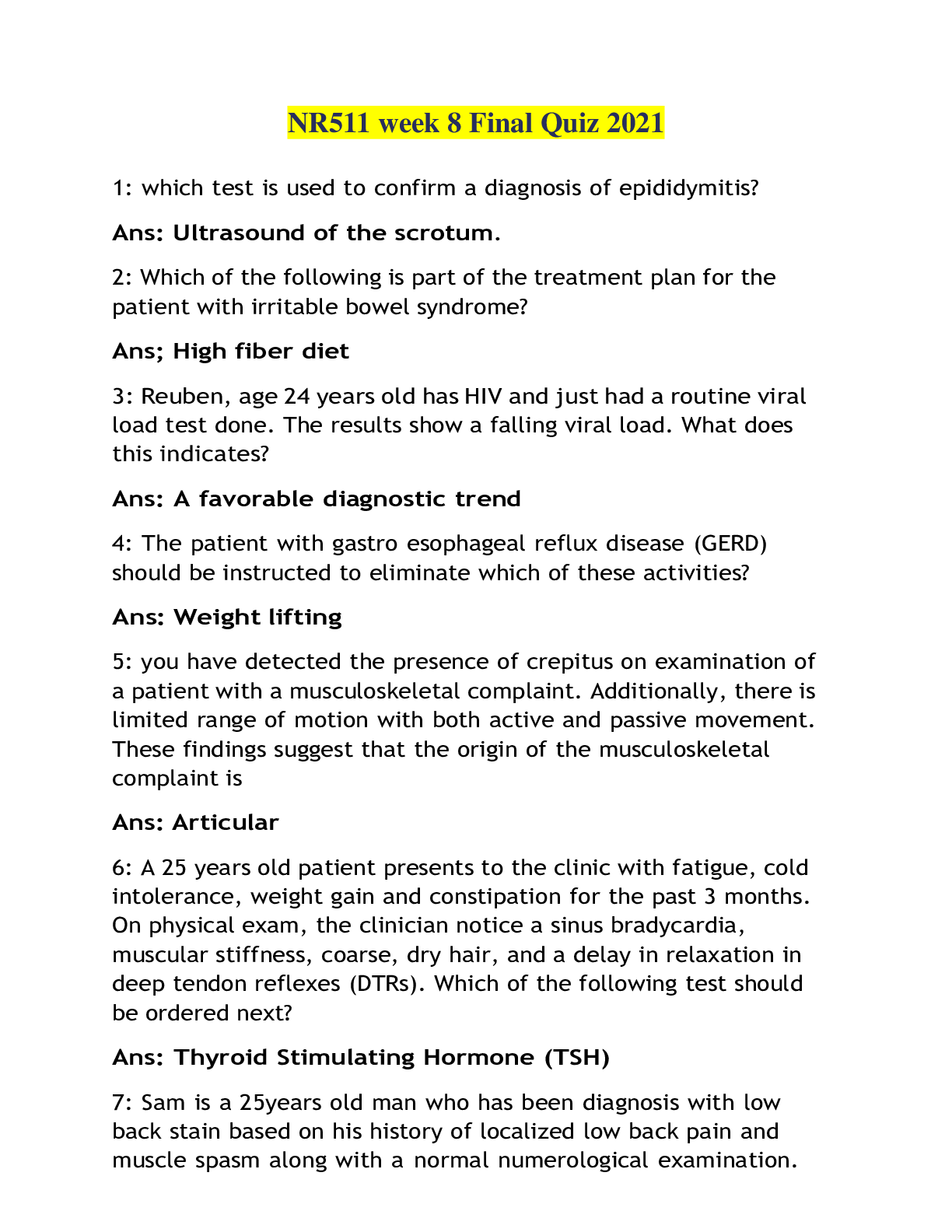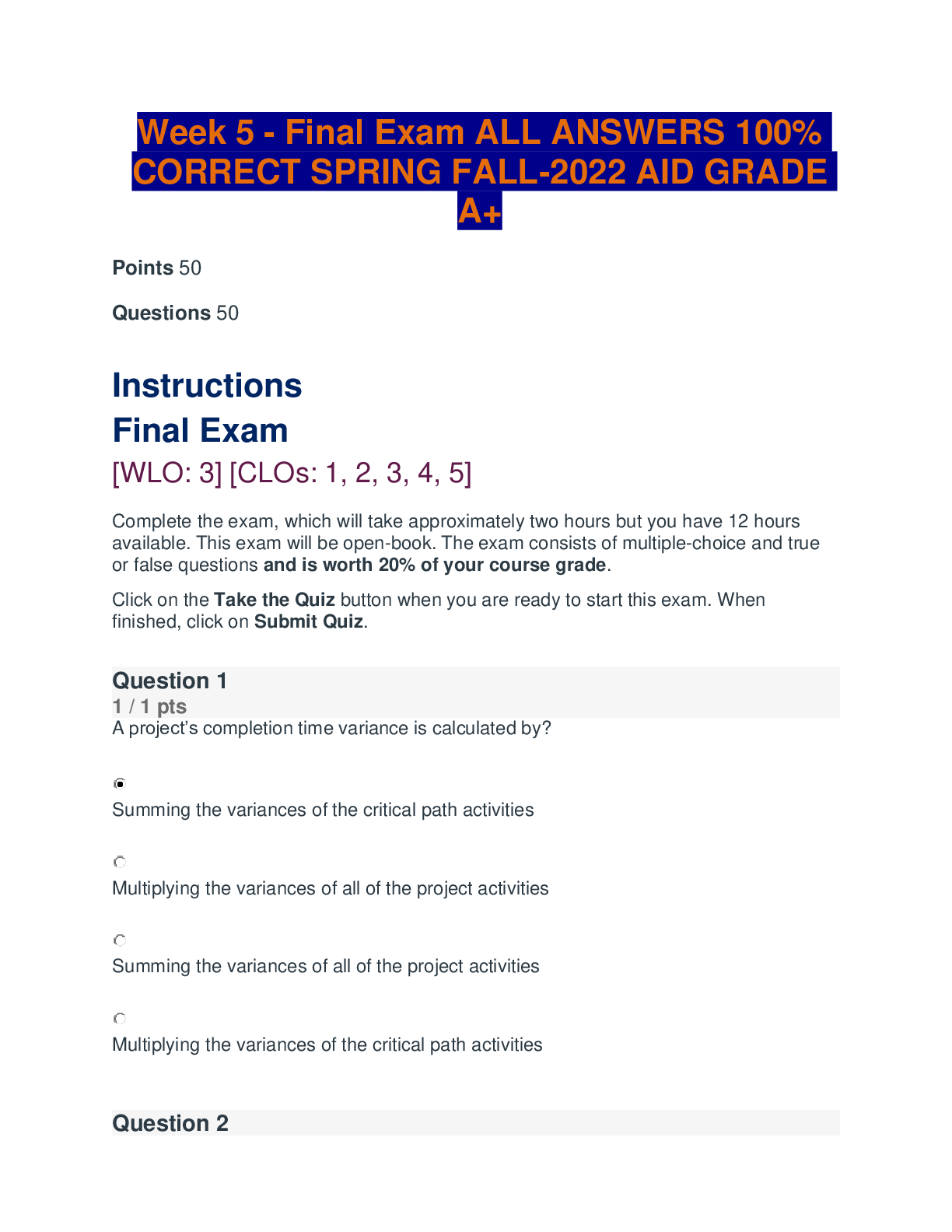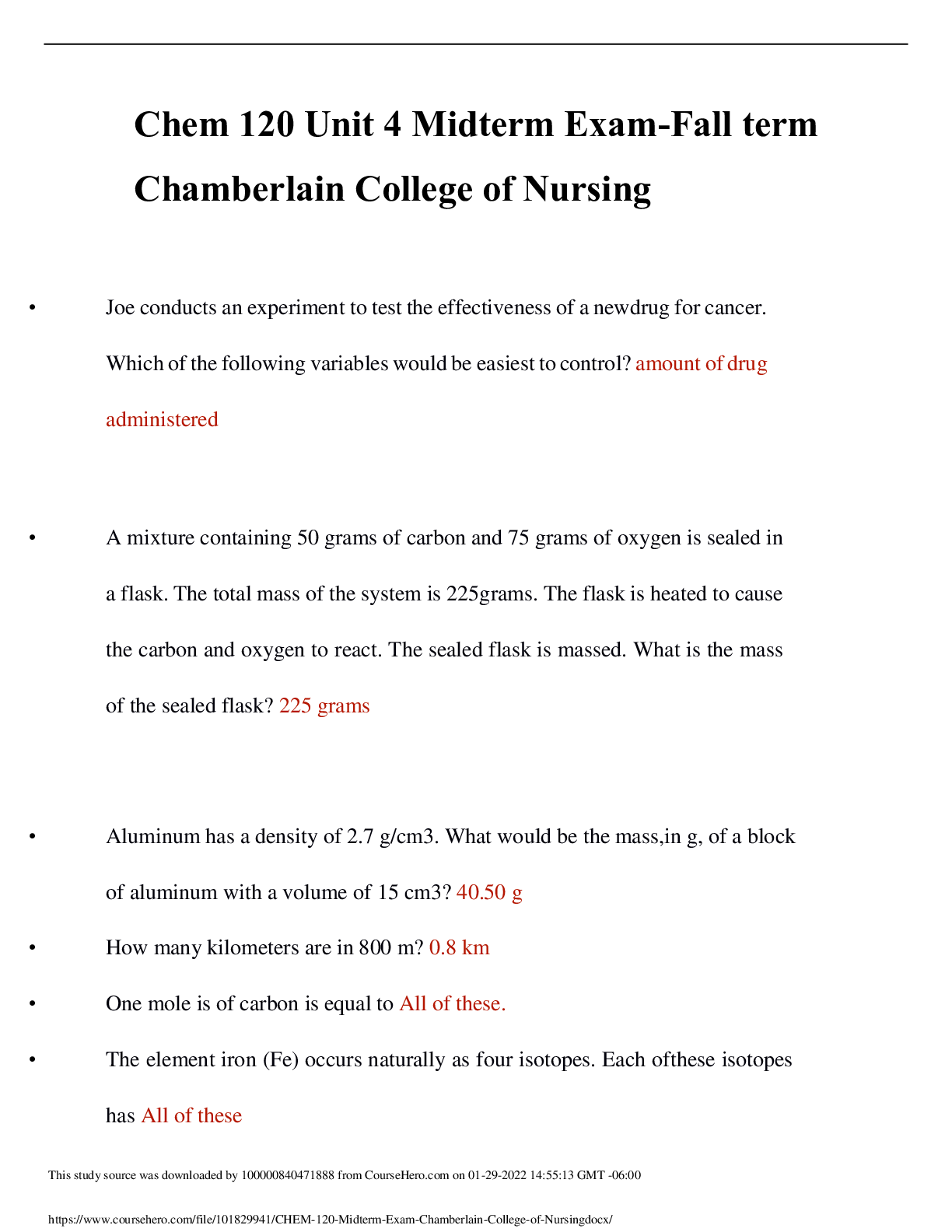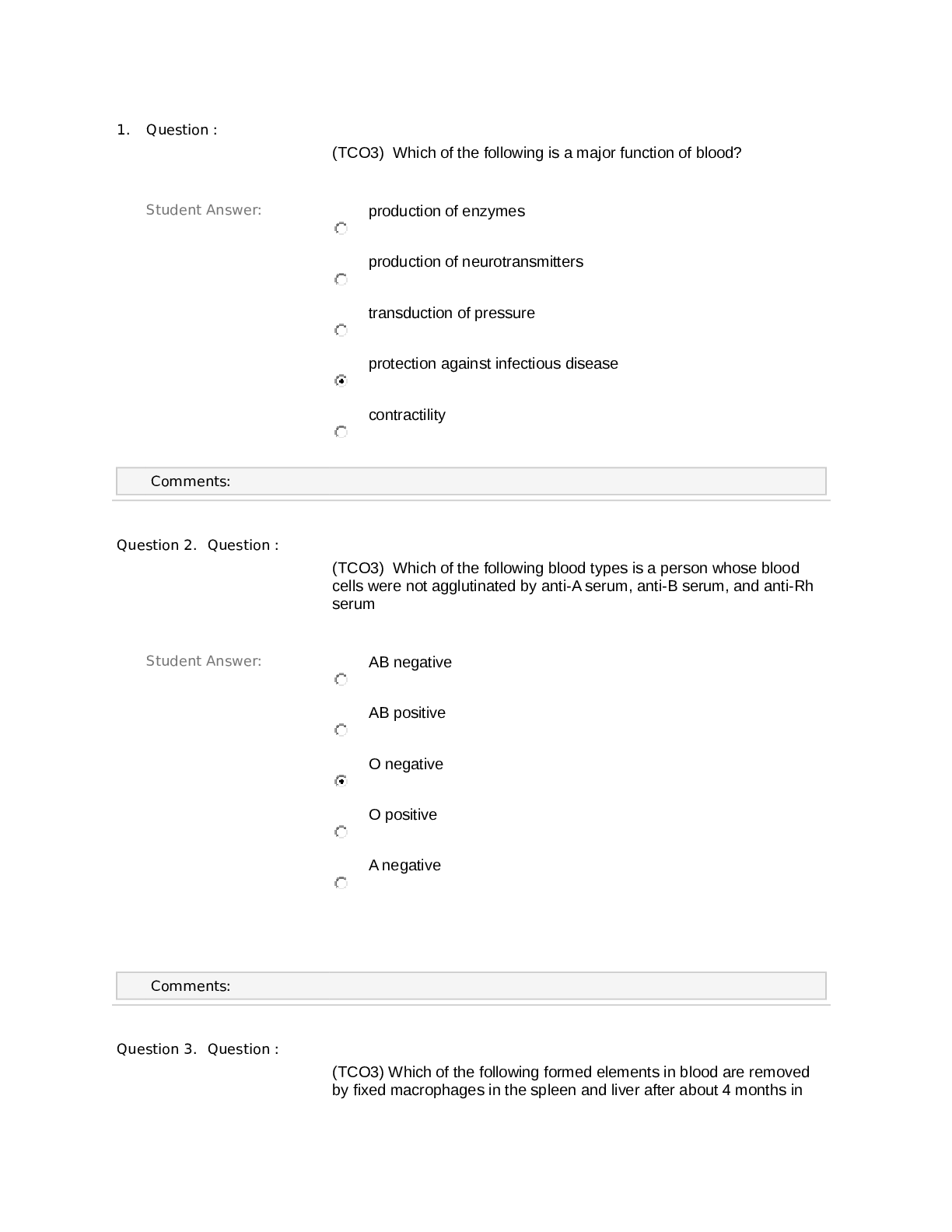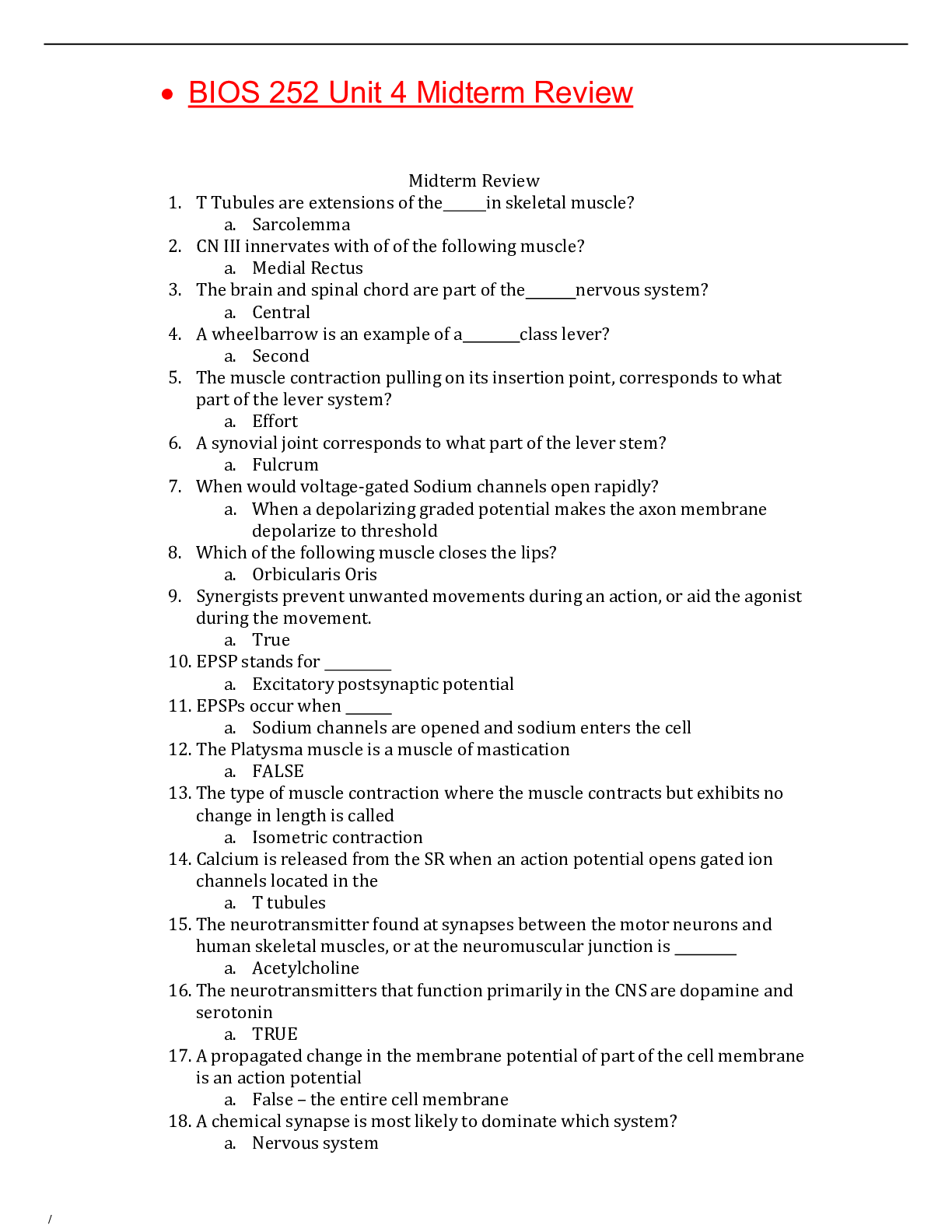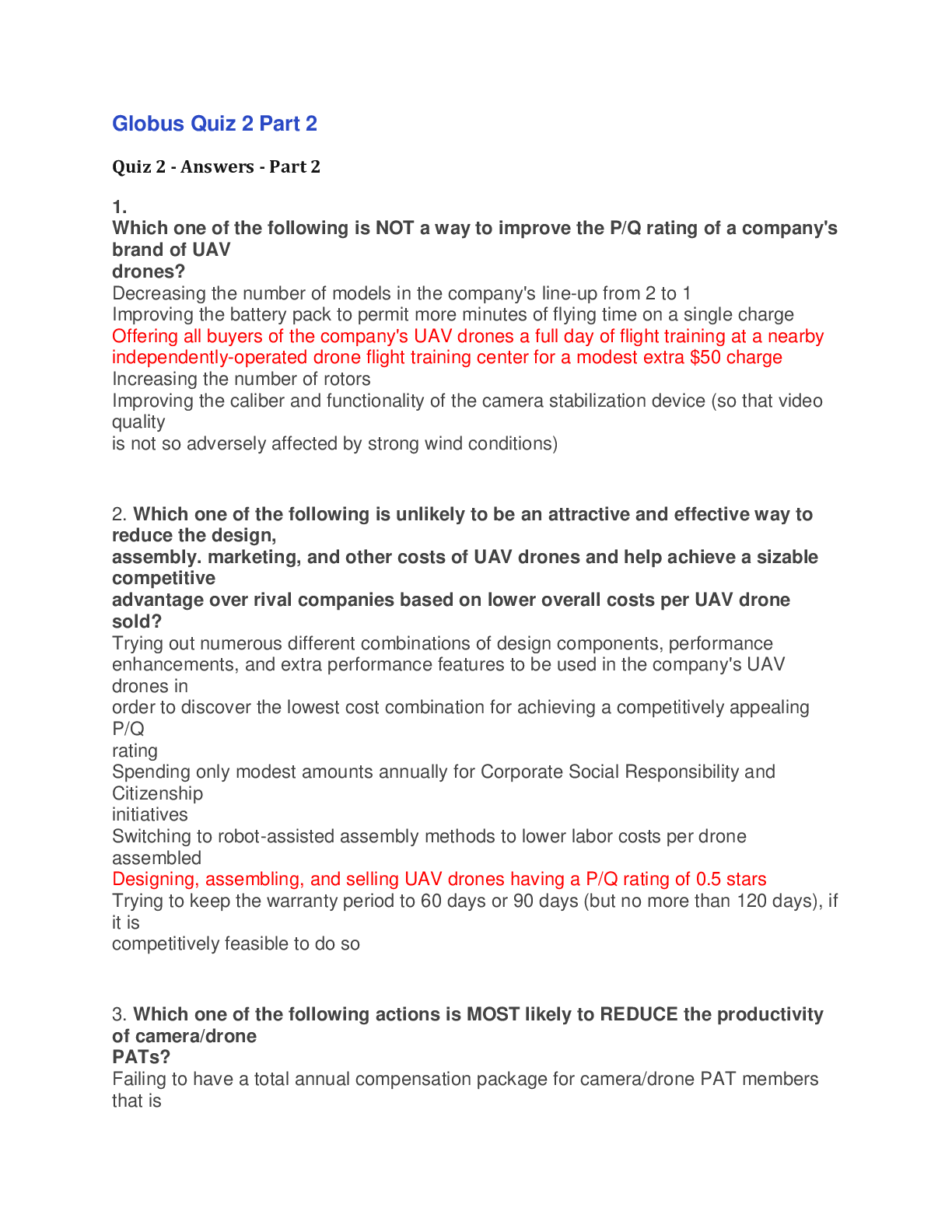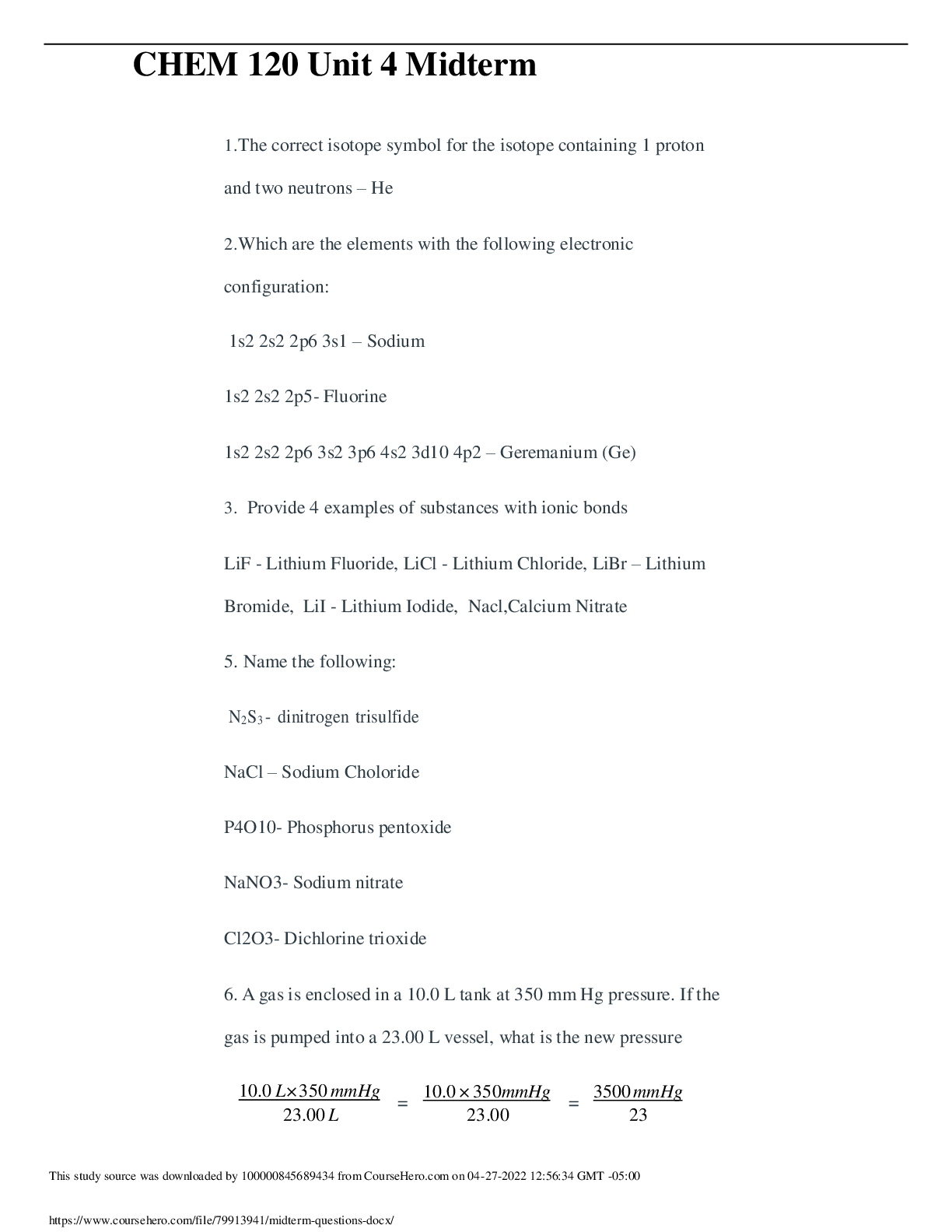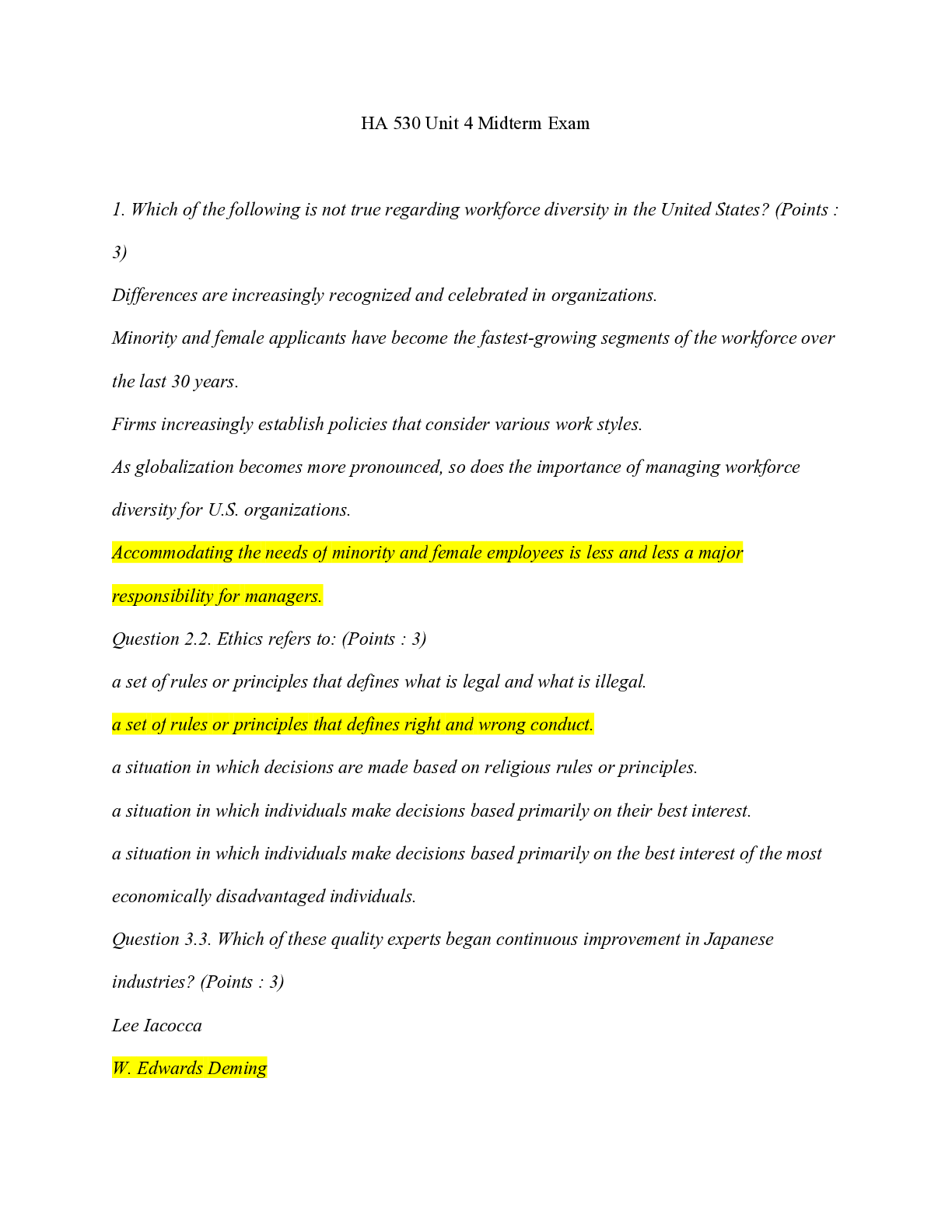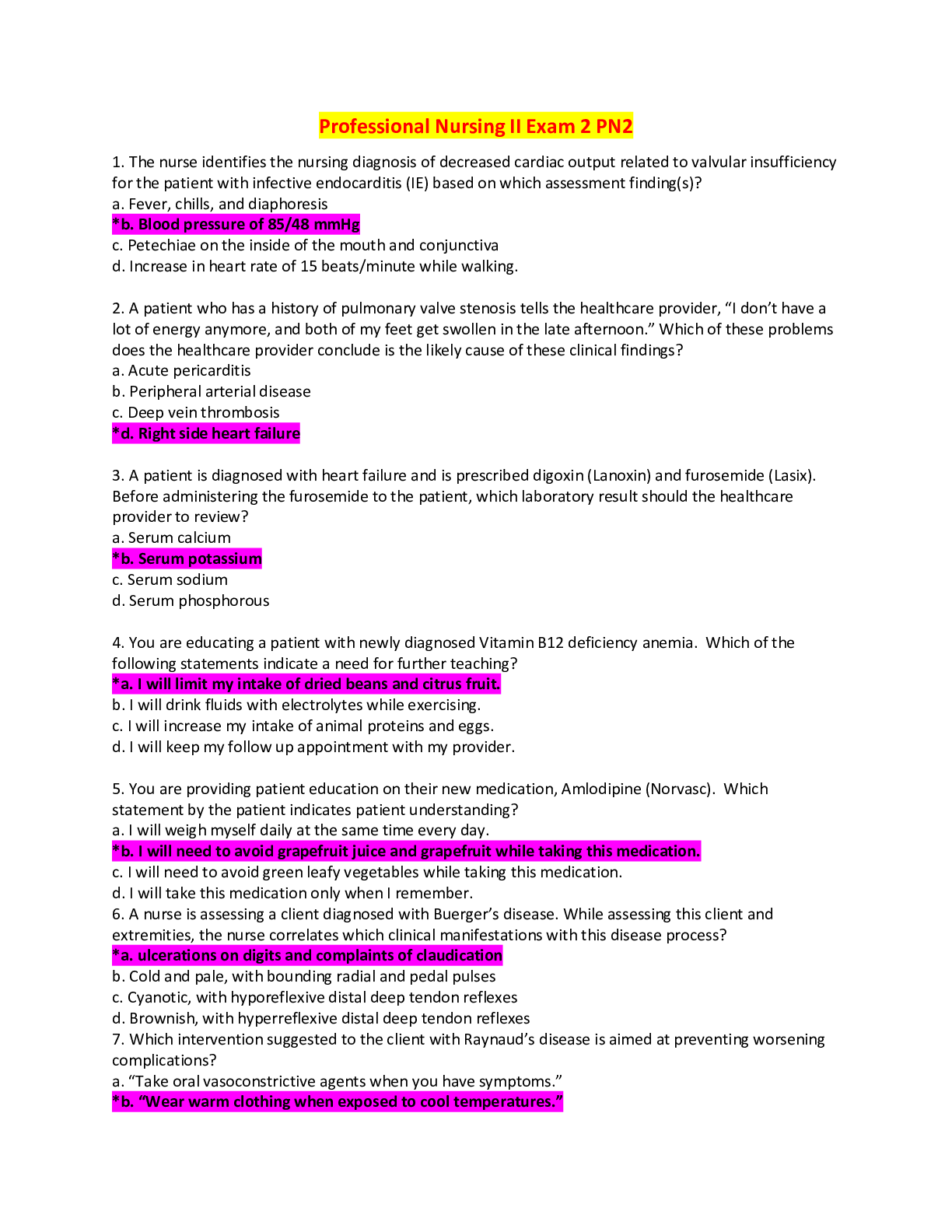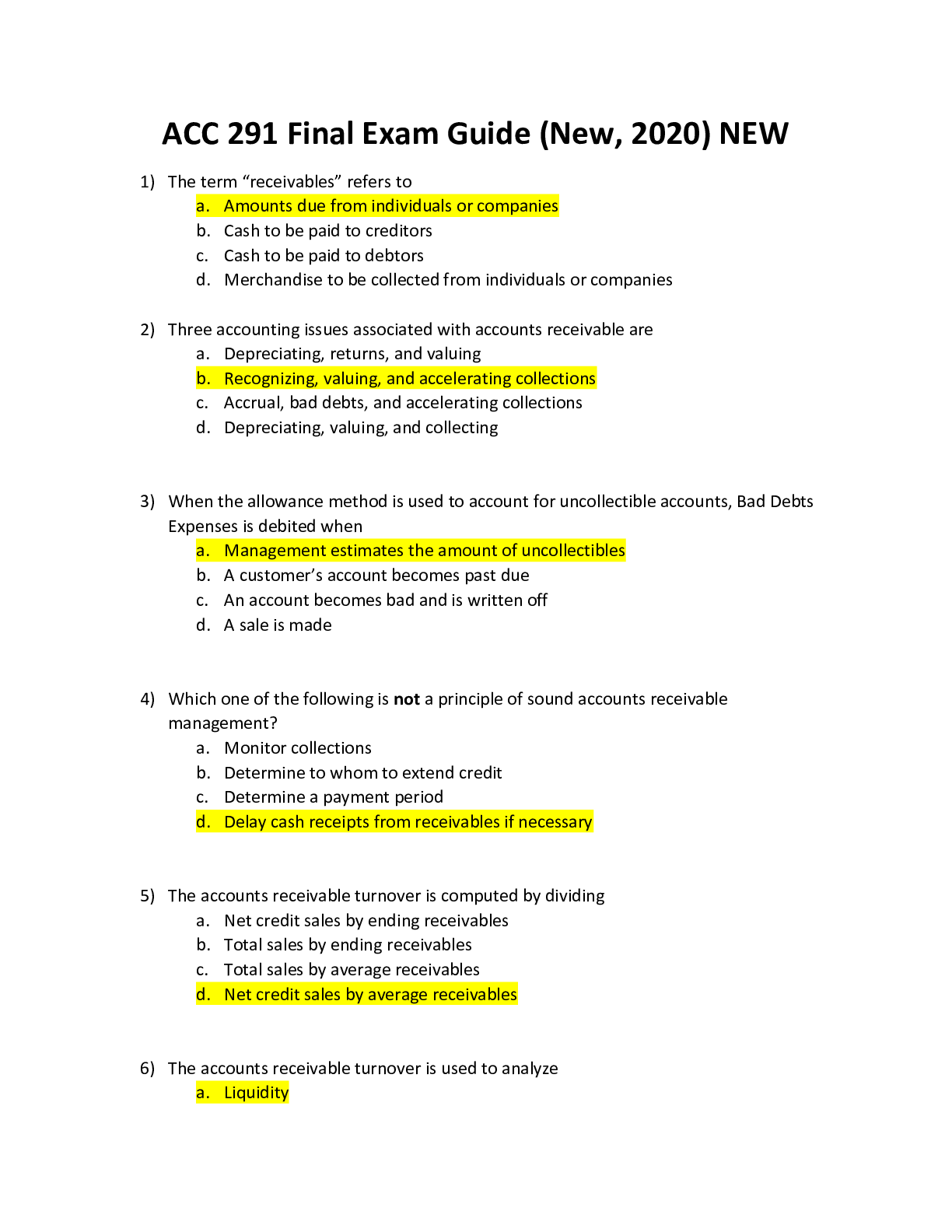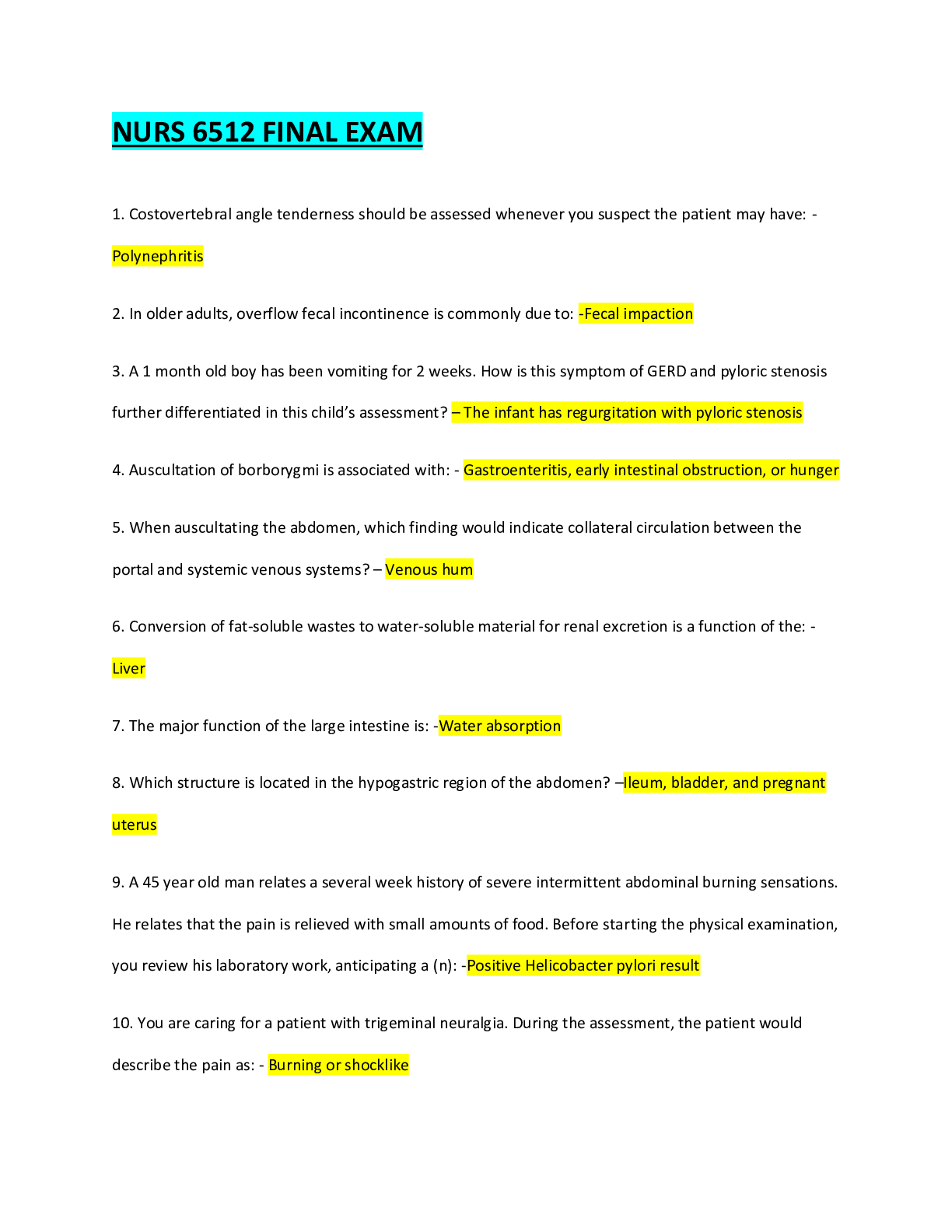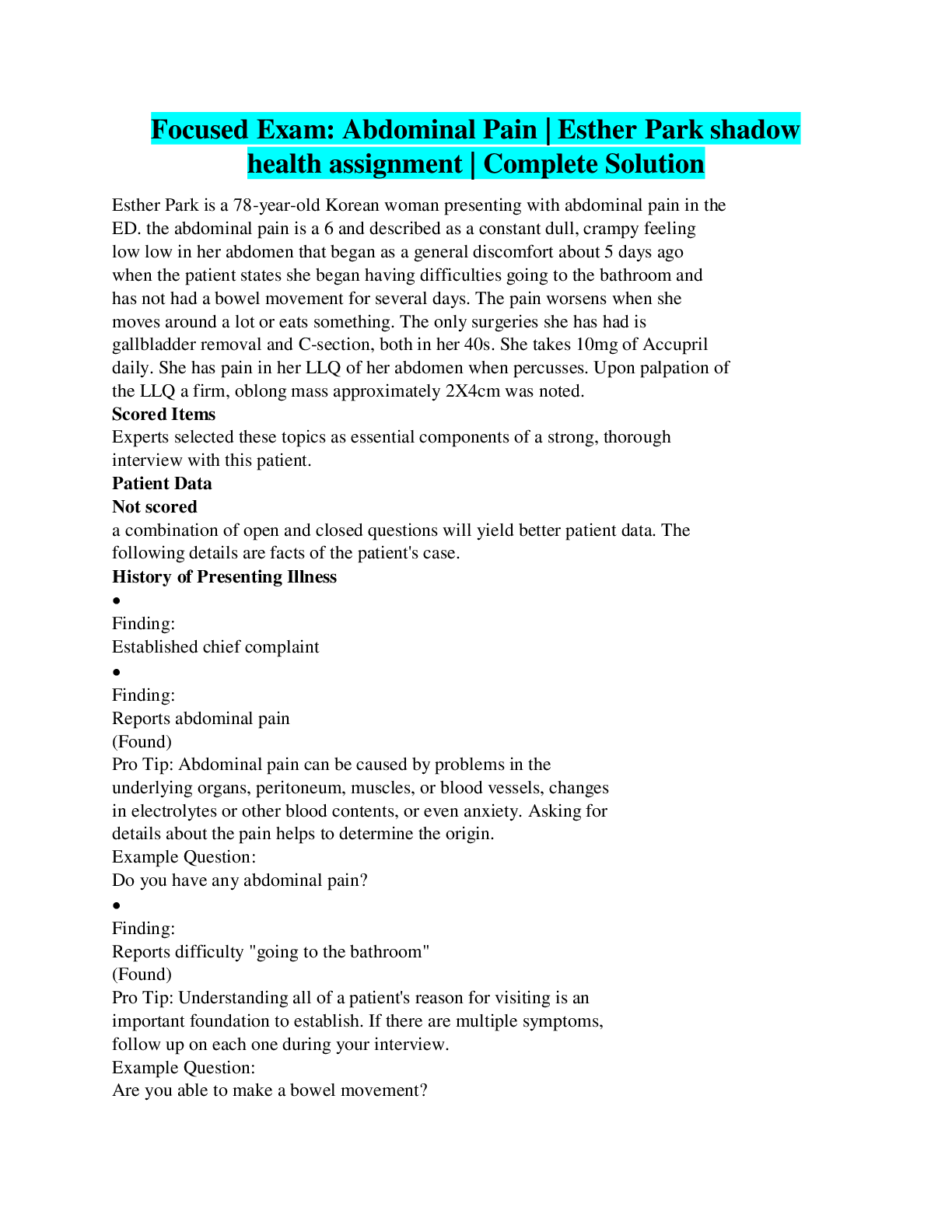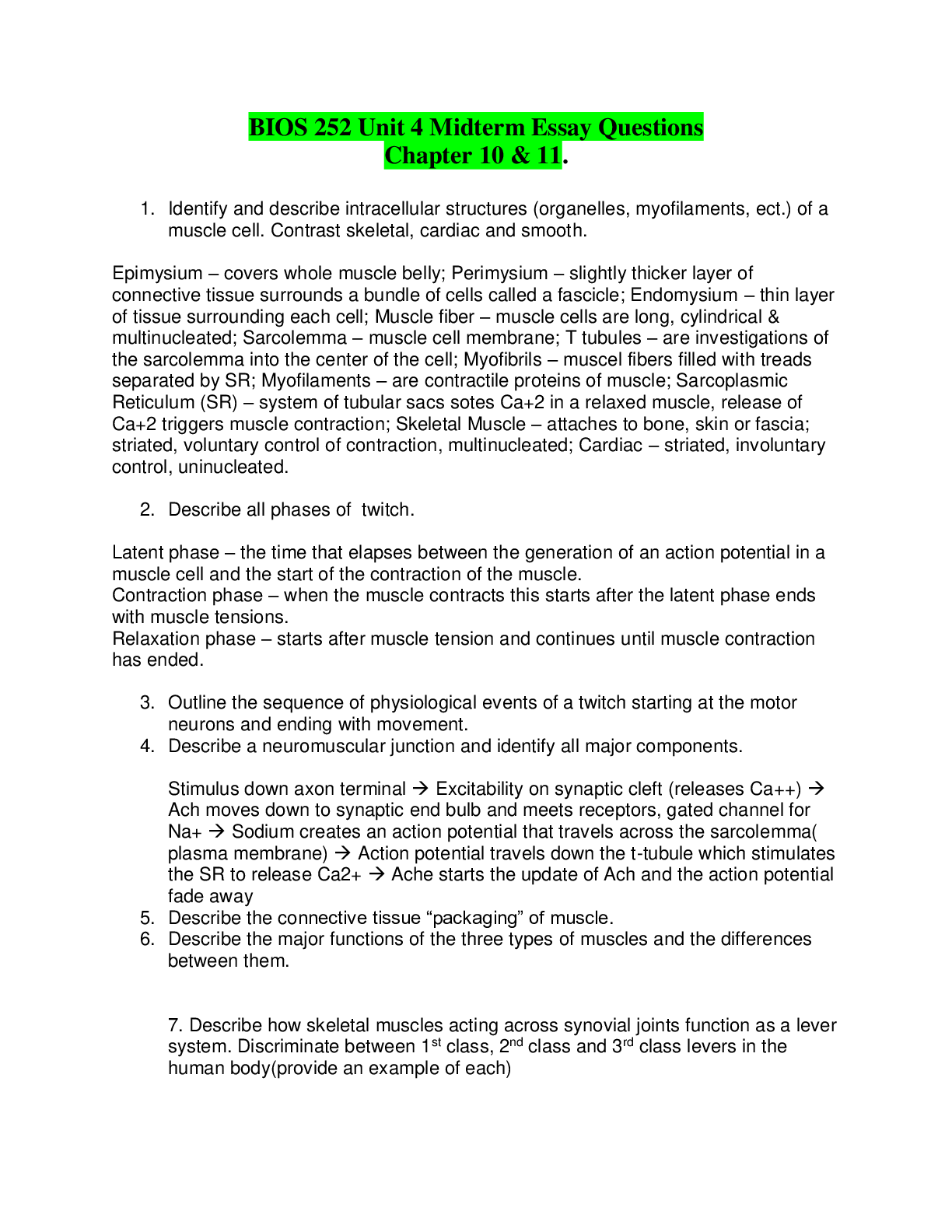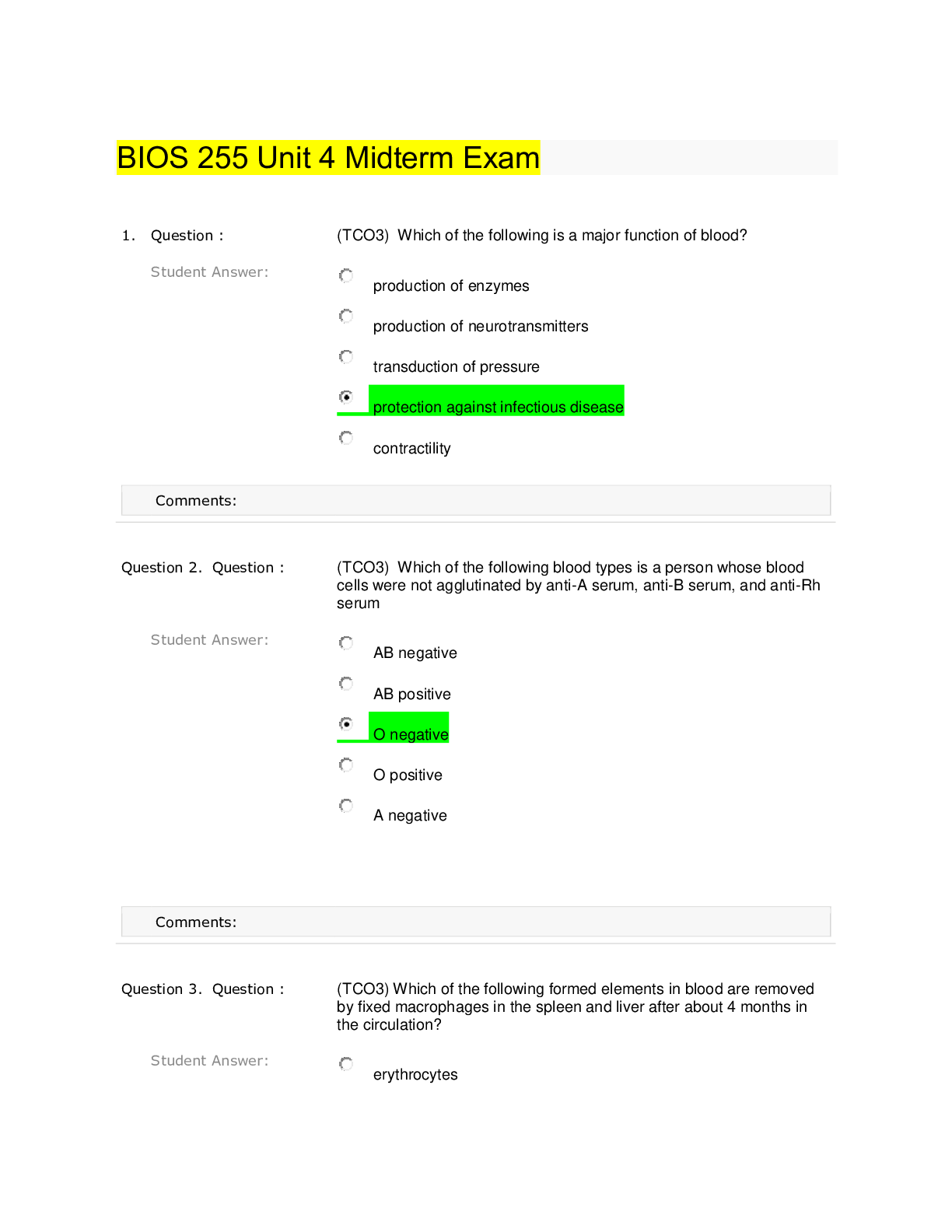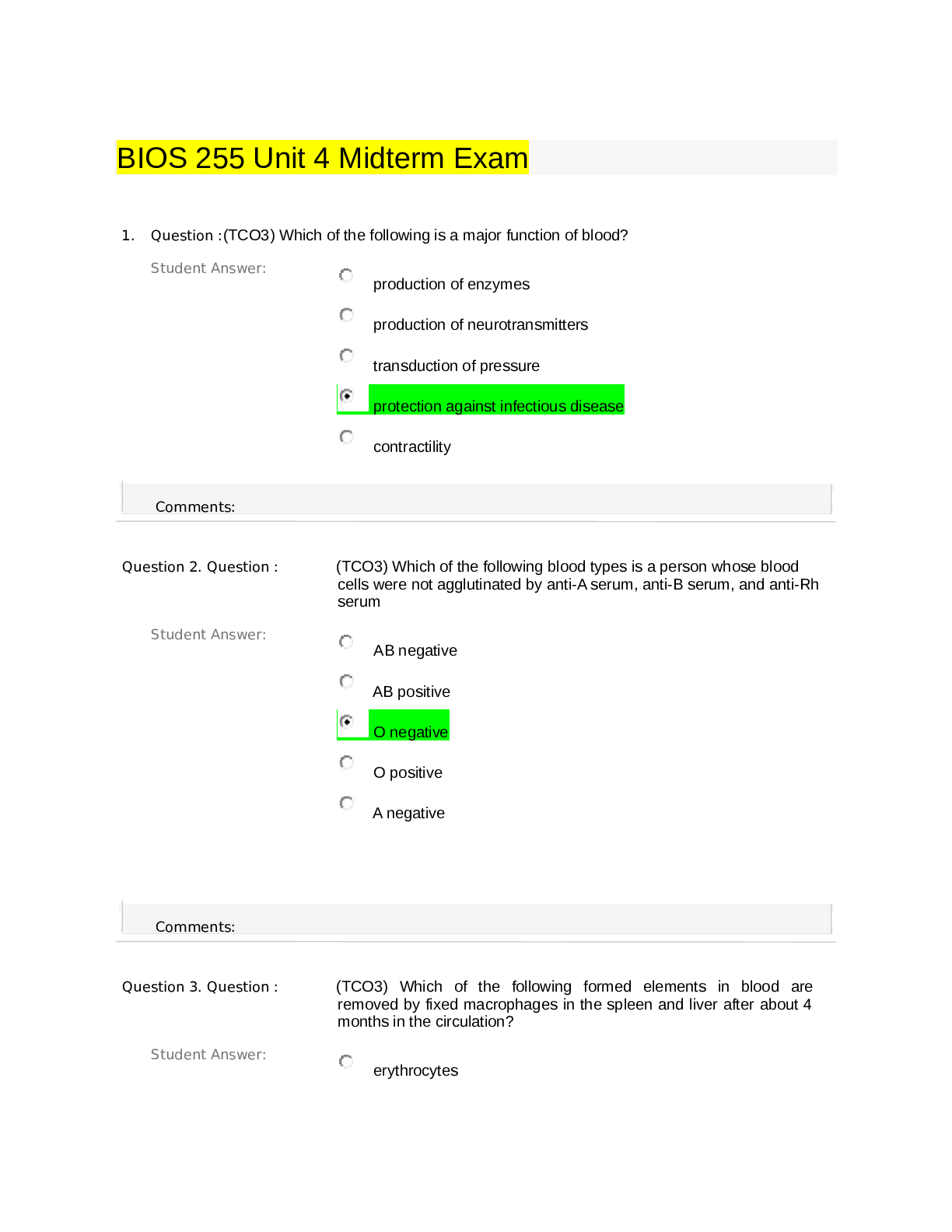Biology > EXAM > BIOS 255 Unit 4 Midterm Exam; Latest 2020/21 Complete Solution, Already Graded A. (All)
BIOS 255 Unit 4 Midterm Exam; Latest 2020/21 Complete Solution, Already Graded A.
Document Content and Description Below
BIOS 255 Unit 4 Midterm Exam 1. Question : (TCO3) Which of the following is a major function of blood? 2. Question : (TCO3) Which of the following blood types is a person whose blood cells were not ag... glutinated by anti-A serum, anti-B serum, and anti-Rh serum 3. Question : (TCO3) Which of the following formed elements in blood are removed by fixed macrophages in the spleen and liver after about 4 months in the circulation? 4. Question : (TCO3) A condition in which inadequate intake of vitamin B12 or folic acid cause production of large abnormal red blood cells is called 5. Question : (TCO3) Lymph is 6. Question : (TCO3) Which of the following precursor cells give rise to granular leukocytes? 7. Question : (TCO3) Which of the following substances is an anticoagulant formed by mast cells and basophils? 8. Question : (TCO3) Myeloid stem cells reside in 9. Question : (TCO1) The membrane that surrounds and protects the heart is called the 10. Question : (TCO1) Stimulation of the sympathetic output to the heart would lead to 11. Question : (TCO1) Which of the following hormones do not increase the heart rate? 12. Question : (TCO1) The difference between a person’s maximum cardiac output and resting cardiac output is called the 13. Question : (TCO1) The remnant of the foramen ovale in the adult heart is the 14. Question : (TCO1) Which of the following chambers of the heart is surrounded by the thickest layer of myocardium? 15. Question : (TCO1) Which of the following electrocardiogram (ECG) waves represents ventricular repolarization? 16. Question : (TCO1) Elevated levels of _____ in the blood lead to reduced heart rate. 17. Question : (TCO1) Which layer of the heart is the major contributor to the pumping action of the heart? 18. Question : (TCO2) Which of the following categories of hypertensive drugs lower blood pressure by blocking the formation of angtiotensin II, which results in vasodilation and decreased aldosterone secretion? 19. Question : (TCO2) Which of the following categories would an individual with a blood pressure of 130/85 be placed in? 20. Question : (TCO2) Which of the following effectors would NOT be activated as described below in response to hypovolemic shock? 21. Question : (TCO2) Which of the following types of blood vessels have high pulsing blood pressure? 22. Question : (TCO2) During embryonic development, blood cells are formed from 23. Question : (TCO2) Fenestrated capillaries that have small pores are commonly found in the 24. Question : (TCO2) Which of the following structures are found in veins but NOT in arteries? 25. Question : (TCO2) The largest driving force for pulling fluid from the interstitial spaces back into the capillaries is: 26. Question : (TCO3) What is the pulse pressure of a person that has a diastolic pressure of 60 mm Hg with a systolic pressure of 125 mm Hg? 27. Question : (TCO3) Determine the mean arterial pressure for a patient with an average systolic pressure of 120 mm Hg with a mean diastolic pressure of 60 mm Hg: 28. Question : (TCO3) What is the resting cardiac output (in liters) of an athlete with a stroke volume of 75 ml and a resting heart rate of 60 beats/minute? 29. Question : (TCO3) The same athlete during exercise has a heart rate of 180 beats/minute with an increase of stroke volume to 125 ml. What is their cardiac output during exercise? 30. Question : (TCO3) What is the cardiac cycle for a person with a resting heart rate of 66 beats per minute? 31. Question : (TCO3) What is the name of the blood vessel that supplies the face and head (except the brain) with oxygenated blood? 32. Question : (TCO3) What is the name of the blood vessel that is the distal extension of the external iliac artery as it enters the leg? 33. Question : (TCO3) What is the name of the blood vessel that drains deoxygenated blood from the medial aspect of the forearm? 34. Question : (TCO3) What is the name of the vein that is found behind the kneecap on the posterior surface of the leg? 35. Question : (TCO3) What is the name of this blood vessel that is highlighted? 36. Question : (TCO3) List and briefly describe the three mechanisms used to reduce blood loss from a damaged blood vessel. 37. Question : (TCO1) Define arrhythmia and discuss different categories of arrhythmias. 38. Question : (TCO2) What is a portal vein? Describe the hepatic portal circulation and its functional significance [Show More]
Last updated: 1 year ago
Preview 1 out of 17 pages
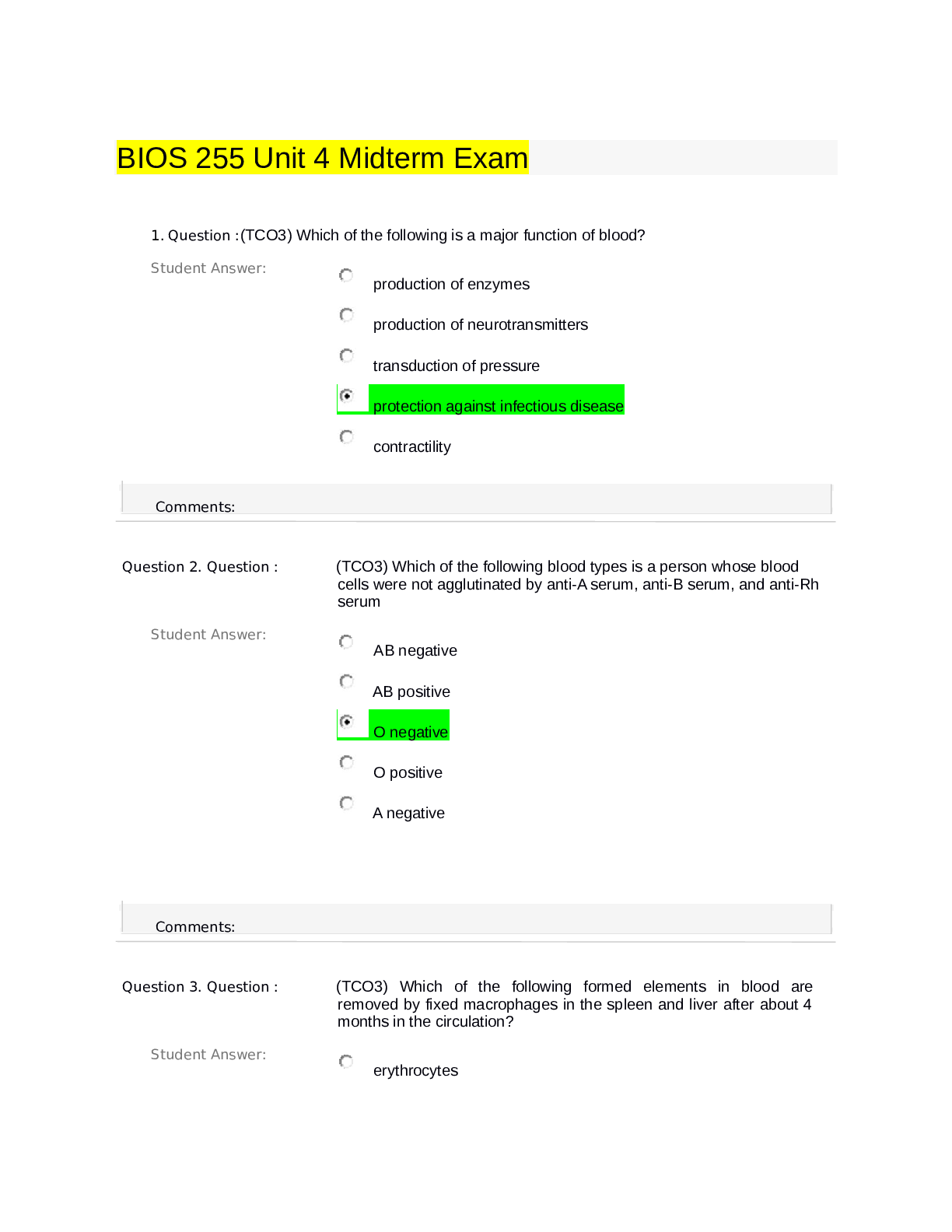
Reviews( 0 )
Document information
Connected school, study & course
About the document
Uploaded On
Sep 22, 2021
Number of pages
17
Written in
Additional information
This document has been written for:
Uploaded
Sep 22, 2021
Downloads
0
Views
36


